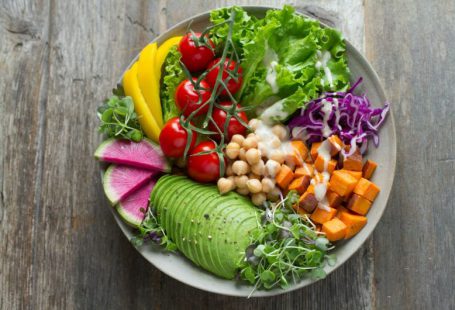In recent years, technology has revolutionized the way we order and receive food. The emergence of food delivery apps and other digital platforms has transformed the food industry, making it easier and more convenient for consumers to enjoy their favorite meals without leaving the comfort of their homes. This shift towards technology-driven food delivery services has had a profound impact on businesses, consumers, and the overall dining experience.
Enhanced Convenience and Accessibility
One of the most significant impacts of technology on modern food delivery services is the enhanced convenience and accessibility it provides to consumers. With the rise of food delivery apps like Uber Eats, DoorDash, and Grubhub, ordering food has never been easier. Consumers can browse through a wide selection of restaurants, place their orders with a few taps on their smartphones, and have their meals delivered right to their doorstep. This level of convenience has made food delivery a popular choice for busy individuals and families looking for a quick and hassle-free dining option.
Improved Efficiency and Accuracy
Technology has also improved the efficiency and accuracy of food delivery services. With the use of GPS tracking, delivery drivers can navigate to the customer’s location more easily, reducing delivery times and ensuring that orders arrive promptly. Additionally, digital ordering systems help minimize errors in communication between customers, restaurants, and delivery drivers, leading to more accurate orders and improved customer satisfaction. The integration of technology in food delivery services has streamlined the entire process, making it more efficient for all parties involved.
Enhanced Customer Experience
Another key impact of technology on modern food delivery services is the enhanced customer experience it offers. Digital platforms allow customers to track their orders in real-time, providing them with updates on the status of their delivery and estimated arrival time. This level of transparency helps build trust and confidence in the service, leading to greater customer satisfaction. Additionally, technology enables restaurants to customize their offerings and promotions based on customer preferences and ordering history, creating a more personalized and engaging experience for consumers.
Innovative Solutions and Adaptability
The integration of technology in food delivery services has also led to the development of innovative solutions and increased adaptability within the industry. Virtual kitchens, also known as ghost kitchens, have emerged as a cost-effective way for restaurants to fulfill delivery orders without the need for a physical dining space. These virtual kitchens allow businesses to expand their reach and experiment with new concepts and cuisines, catering to a wider audience of customers. Additionally, the use of data analytics and AI technology has enabled food delivery companies to optimize their operations, improve efficiency, and better meet the demands of a rapidly evolving market.
Sustainability and Environmental Impact
Technology has also played a role in promoting sustainability and reducing the environmental impact of food delivery services. Many food delivery apps have implemented eco-friendly practices such as using biodegradable packaging, optimizing delivery routes to reduce emissions, and partnering with restaurants that prioritize sustainable sourcing and production methods. By leveraging technology to promote environmentally conscious practices, food delivery services can minimize their carbon footprint and contribute to a more sustainable food ecosystem.
Driving Growth and Expansion
Overall, the impact of technology on modern food delivery services has been transformative, driving growth and expansion within the industry. The convenience, efficiency, and enhanced customer experience offered by tech-driven platforms have attracted a growing number of consumers to food delivery services, leading to increased demand and market opportunities. As technology continues to evolve and innovate, we can expect to see further advancements in food delivery services, ultimately reshaping the way we order, receive, and enjoy food in the modern era.
In conclusion,
The integration of technology in food delivery services has revolutionized the dining experience, offering enhanced convenience, efficiency, and sustainability for consumers and businesses alike. As the industry continues to evolve and adapt to changing consumer preferences and technological advancements, we can expect to see even more innovative solutions and improvements in the way we order and enjoy food in the future. Technology has truly transformed the landscape of modern food delivery services, making it easier and more enjoyable for everyone involved.





